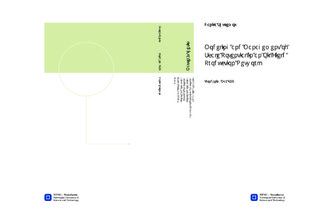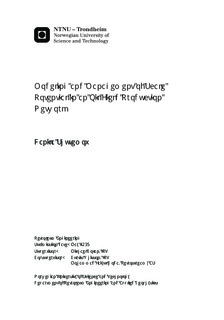| dc.contributor.advisor | Golan, Michael | nb_NO |
| dc.contributor.advisor | Whitson, Curtis | nb_NO |
| dc.contributor.advisor | Hoda, Mohammad Faizul | nb_NO |
| dc.contributor.author | Shutemov, Danila | nb_NO |
| dc.date.accessioned | 2014-12-19T12:17:28Z | |
| dc.date.available | 2014-12-19T12:17:28Z | |
| dc.date.created | 2013-09-16 | nb_NO |
| dc.date.issued | 2013 | nb_NO |
| dc.identifier | 648700 | nb_NO |
| dc.identifier | ntnudaim:8804 | nb_NO |
| dc.identifier.uri | http://hdl.handle.net/11250/240115 | |
| dc.description.abstract | Diversity and complexity of chemical treatment operations provide difficulties to evaluate an impact of chemicals used for solving different production issues. Integrated chemical management system will provide a better understanding and evaluation of chemical performance. Some chemical treatment modeling software is available on the market with capabilities to simulate and evaluate particular production issue. Unfortunately they are not able to cover majority of issues under one application. Approach to integrate chemical applications by using asset integration software called ?Pipe-It? based on example of created scaling potential management models in an oil field production network was proposed and discussed under this work, which mainly consists of three parts.First chapter highlights theory and chemicals used to solve main production issues appeared during production operations at one of the Norwegian Continental Shelf (NCS) oilfields. Theory behind each issue is stated. General types of chemicals used for treatment operations in oil and gas industry, their features and appreciation on the production of oil and gas are shown and summarized at Appendixes A-G.Second part of work is devoted to description of chemical treatment system used at one of the oilfields located at NCS. Main facilities and associated production streams (three-phase flow, oil, gas and water) are shown. Chemicals associated with these streams are highlighted for each platform. Chemicals injection points are shown for one production and one processing facilities.Last chapter describes implementation of computational models for tracking of scale potential in oilfield production systems within Pipe-It. Oddo-Tomson calculations were used to evaluate precipitation potential of barium sulfate scale. Models were adapted for assumed production system of Ekofisk production platform X and were built within table and visual format. They were called ?table case? and ?visual case? respectively. Self-triggering model for monitoring scaling potential within wells and production manifolds was created and described at chapter three.Results of the work show effective, fast and robust way to implement different chemical treatment models based on example of scale potential monitoring system integration. Visualization is one the advantages of Pipe-It integration approach providing a value for better understanding of chemical treatment applications used for actual production operations at particular facility and as well as the asset level. | nb_NO |
| dc.language | eng | nb_NO |
| dc.publisher | Institutt for petroleumsteknologi og anvendt geofysikk | nb_NO |
| dc.title | Modeling and Management of Scale Potential in an Oil Field Production Network | nb_NO |
| dc.type | Master thesis | nb_NO |
| dc.source.pagenumber | 115 | nb_NO |
| dc.contributor.department | Norges teknisk-naturvitenskapelige universitet, Fakultet for ingeniørvitenskap og teknologi, Institutt for petroleumsteknologi og anvendt geofysikk | nb_NO |

